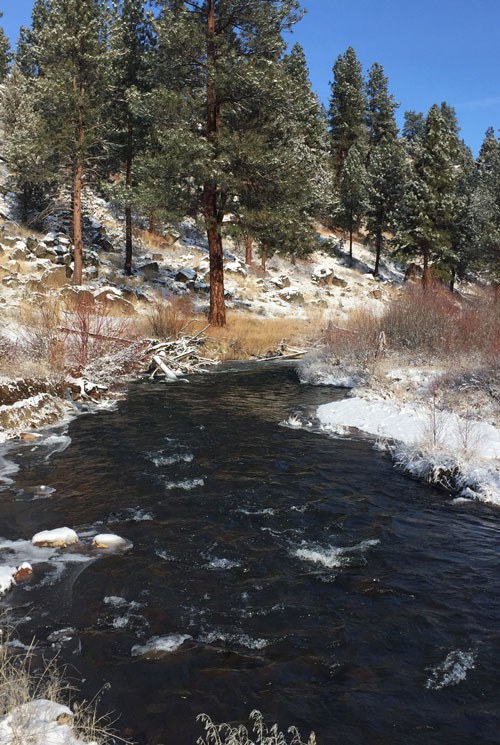Welcome to 2019! If you’re like many, you made the most of the snow over the holidays, skiing at every opportunity. Indeed, conditions were good for those of us looking to get out and slide, but don’t be fooled, the Deschutes River is in the second year of a serious drought. Our mountain snowpack is slim, our reservoirs are depleted, and the forecasts are not promising. Another year of low snowpack threatens fish and wildlife, as well as farmers and ranchers whose crops depend upon stored water. More ominously, climate modeling indicates drought-type conditions are becoming increasingly common in Central Oregon.

One such regional water issue is about to come to the forefront. Over the years, local irrigators, municipalities, and conservation groups have studied, talked, considered, and talked some more about the need to restructure and modernize the region’s antiquated and highly inefficient use of water. Despite some notable successes (such as Whychus Creek/Three Sisters Irrigation District and modest increases in streamflow below Bend), change has arrived slowly. In 2015, frustration with this slow pace boiled over into litigation regarding low winter streamflow on the upper Deschutes River, potentially threatening the survival of the Oregon spotted frog and severely impacting our fisheries.
In 2016, a settlement was reached, giving the parties and federal agencies a chance to develop a Habitat Conservation Plan (or HCP), which will govern--for the foreseeable future--streamflows within the upper Deschutes River region, including the Crooked River, Tumalo Creek, and Whychus Creek. The HCP is due to be released for a very brief public comment period in May or June. The stakes are high for this HCP, with the survival of several species of wildlife and the future of local economies hanging in the balance, and a multi-billion dollar price tag attached. The Deschutes River Habitat Conservation Plan will impact the future of Central Oregon for generations to come, so stay tuned and don’t miss your opportunity to weigh in.
Update: The HCP public comment period was originally set to be released in January or February. It has now been moved to May or June.
Learn more:


